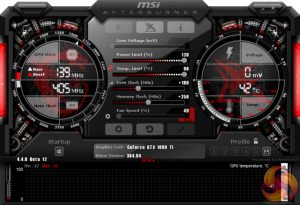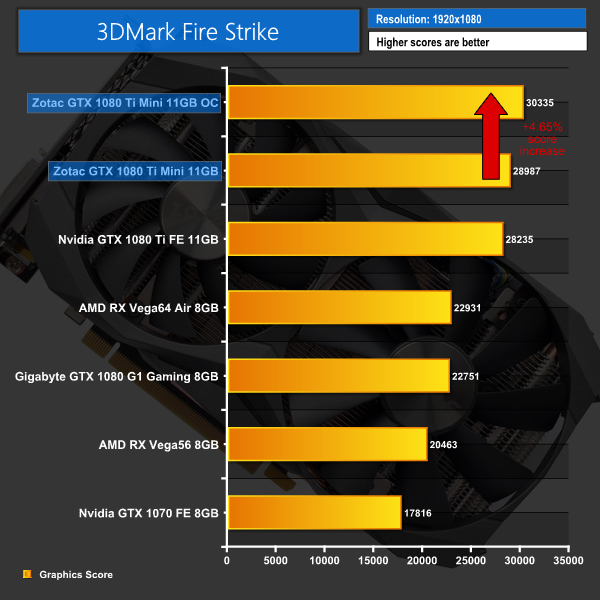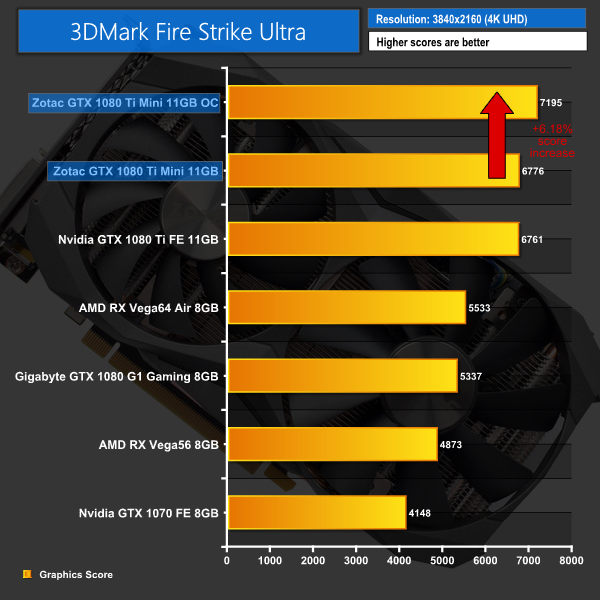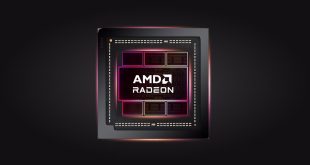My best overclocking results came with +100MHz added to the core, +250MHz to the memory, with power and temperature sliders at their maximum levels.
When running Fire Strike, this overclock helped the card hit a peak frequency of 1923MHz, though it only took a couple of minutes to settle at around 1835MHz. The card did run very hot, however, as the core temperature continued to rise until it again hit the new thermal ceiling of 90C. Noise levels were almost unbearable, too.
Still, this overclock did bring some tangible gains – as demonstrated above. An average 5% performance increase is not to be sniffed at.
That being said, it is my opinion that the extra heat and noise are really not worth it. I would suggest a GTX 1080 Ti is fast enough already, and considering the size limitations of the Zotac Mini, leaving the card in an overclocked state may not be the best idea.
 KitGuru KitGuru.net – Tech News | Hardware News | Hardware Reviews | IOS | Mobile | Gaming | Graphics Cards
KitGuru KitGuru.net – Tech News | Hardware News | Hardware Reviews | IOS | Mobile | Gaming | Graphics Cards






Even though it runs hot, this could be a great card for a SFF build that is being used as a HTPC multi purpose system in your living room. It could bring 4k gaming to your 4k living room TV! I wonder if there is a small AIO cooler that would fit and could help tame those temps.
The mini’s low idle temperature relative to the cards it was tested against suggest the possibility that a custom fan profile might help with its acoustics. As might a well ventilated case. I have a GTX 1070 FE and can attest that it, like many others, got some benefit from a custom voltage profile using Afterburner software. Lower voltage can help the card from hitting its power and temp limits as early, and might help with idle temps and fan speed and noise as well. This was a very informative review, thanks. It’s nice too see more options opening up for gamers.
I’m gonna buy one!